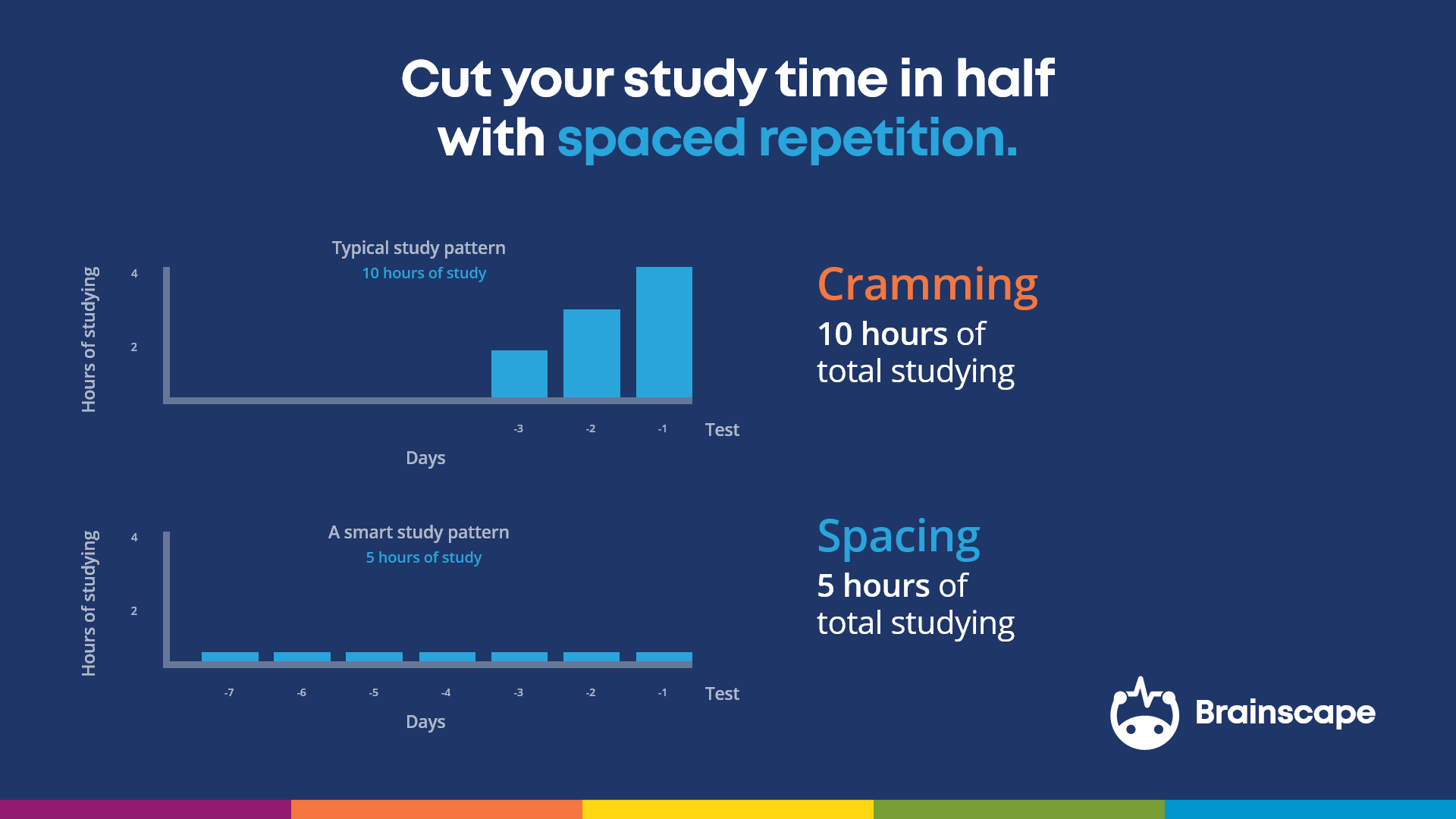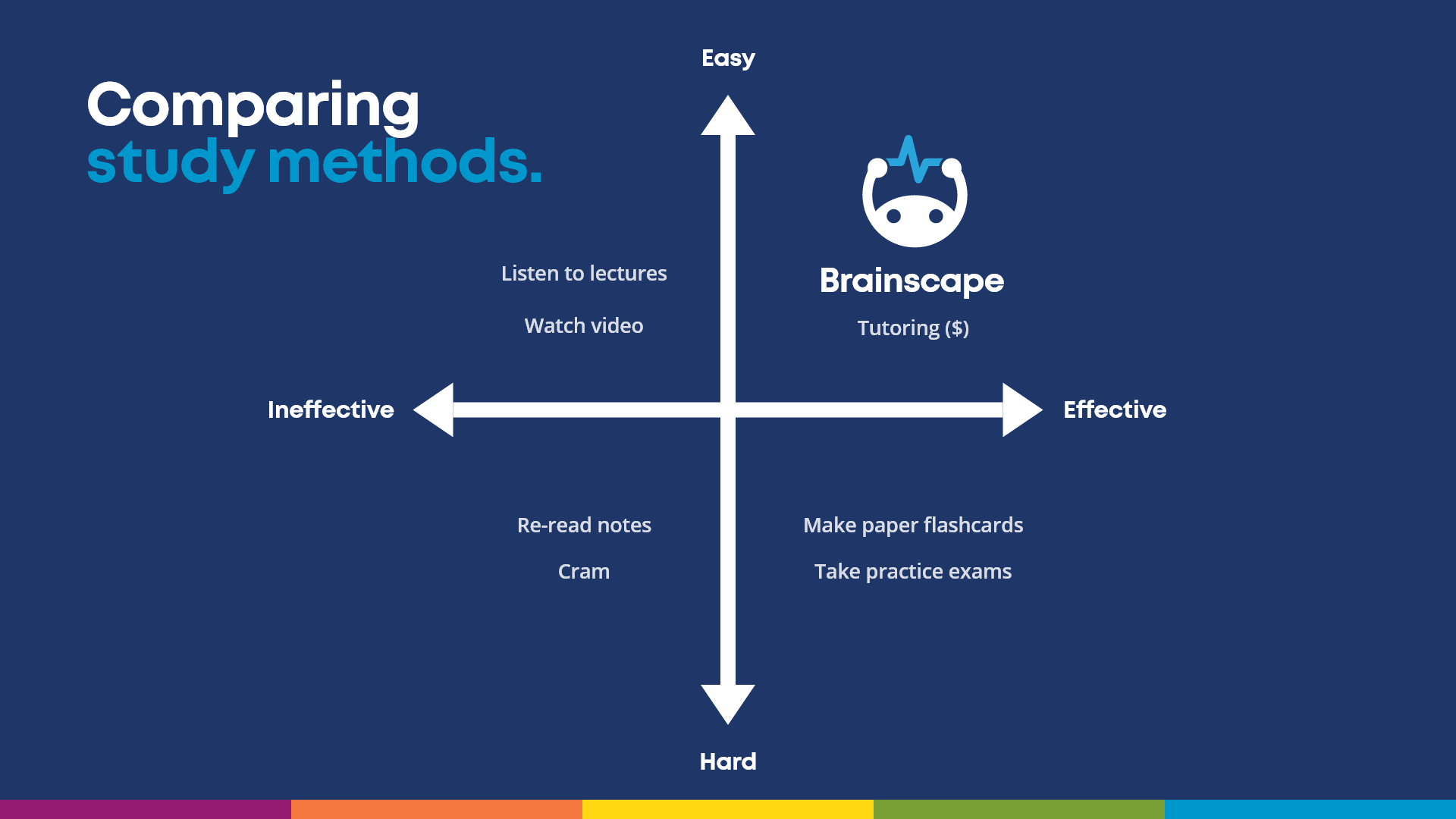So you’re taking AP U.S. History this year. You're in good company; it's the second most popular advanced placement test available.
College admissions teams look very favorably on students who tackle challenging college-level courses in high school and succeed. And obviously, getting some courses out of your way early mean you'll save some cash and potentially earn yourself some free time.
But the AP U.S. History exam (aka APUSH) is not easy—only about half of those who take it actually pass (i.e. score above a 3). To really take your success in the course to the next level, and to potentially earn college credit for your efforts, you actually need to pass. That means studying hard and smart.
That's where Brainscape comes in. Having built the most popular and effective AP U.S. History prep app (using adaptive flashcards), we know our APUSH hacks. We've done the research on how people learn, and have used that to create the most effective study tool out there.
[Also check out our massive guide on how to study effectively]
In this article, you'll find our guide on how to study for AP U.S. history so that you'll remember it all and nail the exam. Use this guidance, as well as Brainscape's AP U.S. History flashcards, to design your study program and study effectively.
(And in case you were wondering: These adaptive, digital flashcards were painstakingly made and vetted by our team of AP U.S. History educators to cover the top concepts in the official College Board test plan, as well as popular test prep providers like Barron's, Princeton Review, Khan Academy, Albert.io, Kaplan, Study.com, and others. In other words, no matter which test prep resource you're using, we've got you covered!)
Step 1. Learn the basics
First, you need to know what you're studying for. Learn about the structure of the test, what's on it, and the score you need to pass. We've done that research for you, but double-check it with the most up-to-date information on the College Board AP U.S. History exam website.
Exam structure
The exam is 3 hours and 15 minutes long. That includes 4 parts:
- Section I, Part A. 55 multiple choice worth 40% of the test. You have 55 minutes for this part.
- Section I, Part B. 3 short-answer questions worth 20% of the test. The first two questions are required and include primary and a secondary source material you have to respond to. For the third question, you get to choose between two options. You have 40 minutes for these 3 questions.
- Section II, Part A. 1 document-based question worth 25% of the test. You are given 7 documents to read and a prompt to respond to. You have 60 minutes, which includes 15 minutes to read the documents.
- Section II, Part B. 1 long essay question worth 15% of the test. You are given a prompt and must write an essay response. You have 40 minutes.
Each of those two sections are comprised of two parts, and your scores on all four parts together will be combined to determine your final test score.
What content is on the AP U.S. History exam?
There are 9 units in the course, each corresponding to a different period of time. Some periods are more heavily tested than others. Here's a breakdown:
- Unit 1: Period 1: 1491–1607 (makes up 4–6% of the test)
- Unit 2: Period 2: 1607–1754 (makes up 6–8% of the test)
- Unit 3: Period 3: 1754–1800 (makes up 10–17% of the test)
- Unit 4: Period 4: 1800–1848 (makes up 10–17% of the test)
- Unit 5: Period 5: 1844–1877 (makes up 10–17% of the test)
- Unit 6: Period 6: 1865–1898 (makes up 10–17% of the test)
- Unit 7: Period 7: 1890–1945 (makes up 10–17% of the test)
- Unit 8: Period 8: 1945–1980 (makes up 10–17% of the test)
- Unit 9: Period 9: 1980–Present (makes up 4–6% of the test)
There are also several "themes" of the test. These are important because they make up the perspectives that are used to understand the history. Knowing how historical events relate to these themes will be essential.
- Theme 1: American and National Identity
- Theme 2: Work, Exchange, and Technology
- Theme 3: Geography and the Environment
- Theme 4: Migration and Settlement
- Theme 5: Politics and Power
- Theme 6: America in the World
- Theme 7: American and Regional Culture
- Theme 8: Social Structures
Step 2. Work smart all school year
Great, now you know what's on it—now you just need to know how to study for the AP U.S. History test.
The real trick is this: start early.
There’s no substitute for studying and doing your homework on a regular basis all throughout the school year, starting on Day One. Your teacher had to get his or her course approved by the College Board, so the material he or she is teaching is solid and geared toward students’ success on the exam.
Roger Sachar, attorney and author of Brainscape’s AP U.S. History flashcards (who himself earned a 5 on the AP U.S. History exam back in the day) advises students that “cramming never works and that gaining a mastery of the actual subject matter throughout the school year is also important.”

Here's what you can do now.
- Develop good study habits. Creating those habits now will help you learn effectively throughout the year.
- Attend class regularly. Your teacher's boring lectures may seem useless, but you will actually learn more if you go. To motivate yourself, think of all the money those classes will save you when you pass the exam and can skip a college class.
- Take good notes. Notes don't just help you record what's important, they help you remember the material for later.
- Study frequently. It's way more effective to study a little each day than to cram. Cramming is a time waste, in the long run.
- Ask questions when you need clarification. Make the most out of your teacher—get clarification for things you don't understand.
Step 3. Learn the best test-taking strategies
The College Board tests certain topics more than others. Focus on those things. The College Board provides information about the exam in this document. Books such as Cracking the AP U.S. History Exam by The Princeton Review offer test-taking strategies to help you prepare before taking the test.
[Check out our guide on effective test-taking strategies.]
Step 4. Find effective ways to study and master the overarching themes
To answer questions correctly on the exam, you will need to have a mastery of the overarching themes and key facts you have learned in the course. You’ll need to remember the general social and political trends of each era.
As Roger Sachar, our course author notes,
They aren’t going to ask you who Franklin Pierce’s Vice President was. The AP test focuses on overarching themes. Those are the kinds of overarching themes that you can get from Brainscape.
Brainscape’s AP U.S. History flashcards provide the fastest, most efficient way to learn the overarching themes and facts you need to know to do well on the exam. Brainscape automatically and accurately figures out what you still need to learn and it continues to quiz you on those exact subjects until you have mastered them.

As Sachar explains,
When you read a book, you read the sentence once. You read the chapter once. Maybe you go back and read it again, or even read it a second or third time. But with Brainscape, you’re going to see a question over and over and over again until you’ve mastered it. Using Brainscape, anyone can be a master.
Other resources that can help you to remember the overarching themes and make sure you know the facts are trade books and videos. Roger Sachar recommends John Green’s CrashCourse U.S. History video series on YouTube as an entertaining way to learn the facts.
Sachar also recommends AP U.S. History All Access as a beneficial resource for students who are preparing for the exam.
For more hacks for acing exams, check out our complete guide on how to study effectively with LESS total effort.
Step 5. Practice essay-writing strategies
To do well on this test, you can't just remember a bunch of facts. You also have to write good answers.
For the short answer and essay questions, you will be graded on the strength of your thesis and the quality of your supporting arguments and facts. The graders aren’t looking for flowery writing or language. They are looking for solid content as an indication that you have a full grasp of the subject matter. So the first step is to make sure that you have thorough knowledge of all the relevant content.
As Roger Sachar reveals,
The essay gives you a lot to work with and there are a lot of different ways to answer the questions bringing in what you know. The only way to really do that and to do that well is to practice.
The College Board publishes past free-response questions, scoring guidelines and sample responses on their website. There is also solid, detailed advice about how to construct an effective thesis statement and write a great essay here, here, here and here.
Looking for essay prompts? You can find some in this document, and here, and here.
Step 6. Create and collaborate
It’s a great idea to create your own flashcards from the notes you have taken in class and when reading your textbook. You can make them with notecards and a marker, or create your own flashcards right in Brainscape that you can also share with your classmates and teacher.
When you collaborate with your classmates to study, you can help to keep each other motivated. By making flashcards and sharing them with each other, you and your friends can expand your knowledge bases—two or more heads are better than one! You can also share the flashcards you have created in Brainscape with your teacher and ask him or her for advice with regard to which topics you have adequately addressed and which topics you still need to focus on.
[See our guide to making and studying flashcards online]
How to study for AP U.S. History
Remember that only half of students who take the AP U.S. History exam get a score high enough to earn credit.
You can be one of those people. You just need to get your head in the game, start early, and choose effective study methods. Brainscape can help. Our AP U.S. History flashcards are designed by experts to give you what you need to pass the exam. And they're effective: they'll teach you the material twice as fast as other tools.
Imagine yourself cruising through the first year of college with that extra free study block. A bit of extra work now is worth it. Keep studying and working hard—we wish you luck!
